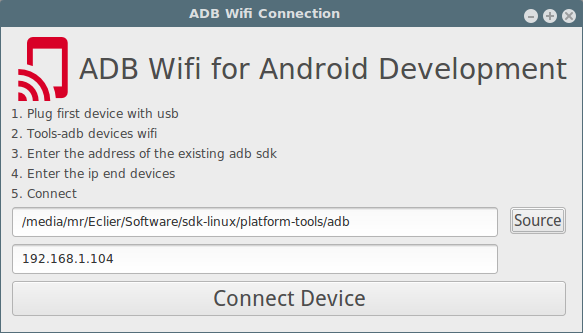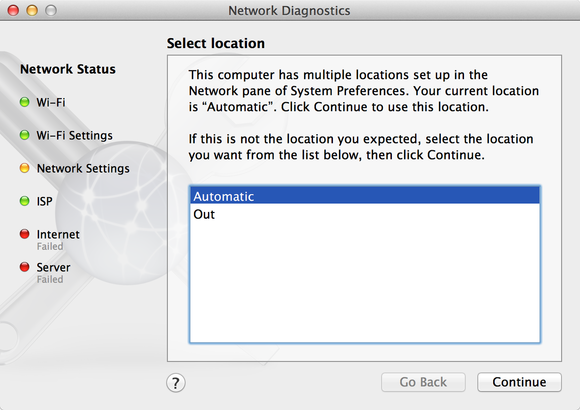Set Up Device for Development. 6 minutes to read. Contributors. In this article This article will discuss how to setup an Android device and connect it to a computer so that the device may be used to run and debug Xamarin.Android applications. By now, you've probably seen your great new application running on the Android emulator, and want to see it running on your shiny Android device.
Here are the steps involved with connecting a device to a computer for debugging:. Enable Debugging on the Device - By default, it will not be possible to debug applications on a Android device.
Install USB Drivers - This step is not necessary for OS X computers. Windows computers may require the installation of USB drivers. Connect the Device to the Computer - The final step involves connecting the device to the computer by either USB or WiFi. Each of these steps will be covered in more detail in the sections below. Enable Debugging on the Device It is possible to use any Android device to test an Android application. However the device must be properly configured before debugging can occur.

The steps involved are slightly different, depending on the version of Android running on the device. Android 4.0 to Android 4.1 For Android 4.0.x to Android 4.1.x, debugging is enabled by following these steps:.
Go to the Settings screen. Select Developer options. Check off the USB debugging option. This screenshot shows the Developer options screen on a device running Android 4.0.3: Android 4.2 and higher Starting in Android 4.2 and higher, the Developer options is hidden by default.
To make it available, go to Settings About phone, and tap the Build number item seven times to reveal the Developer Options tab: Once the Developer Options tab is available under Settings System, open it to reveal developer settings: This is the place to enable developer options such as USB debugging and stay awake mode. Install USB Drivers This step is not necessary for OS X.
Just connect the device to the Mac with a USB cable. It may be necessary to install some extra drivers before a Windows computer will recognize an Android device connected by USB.
Note These are the steps to set up a Google Nexus device and are provided as a reference. Steps for your specific device may vary, but will follow a similar pattern.
Search the internet for your device if you have trouble. Run the android.bat application in the Android SDK install path tools directory.
By default, the Xamarin.Android installer will put the Android SDK in following location on a Windows computer: C: Users username AppData Local Android android-sdk Download the USB Drivers Google Nexus devices (with the exception of the Galaxy Nexus) require the Google USB Driver. The driver for the Galaxy Nexus is. All other Android devices should use the. Install the Google USB Driver package by starting the Android SDK Manager, and expanding the Extras folder, as can be seen in the follow screenshot: Check the Google USB Driver box, and click the Install button.
The driver files are downloaded to the following location: Android SDK install path extras google usb driver The default path for a Xamarin.Android installation is: C: Users username AppData Local Android android-sdk extras google usbdriver Installing the USB Driver After the USB drivers are downloaded, it is necessary to install them. To install the drivers on Windows 7:. Connect your device to the computer with a USB cable. Right-click on the Computer from your desktop or Windows Explorer, and select Manage. Select Devices in the left pane.
Locate and expand Other Devices in the right pane. Right-click the device name and select Update Driver Software. This will launch the Hardware Update Wizard.
Select Browse my computer for driver software and click Next. Click Browse and locate the USB driver folder (the Google USB driver is located in Android SDK install path extras google usbdriver). Click Next to install the driver. Installing Unverified Drivers in Windows 8 Extra steps may be required to install an unverified driver in Windows 8. The following steps describe how to install the drivers for a Galaxy Nexus:.
Access the Windows 8 Advanced Boot Options - This step involves rebooting the computer to access the Advanced Boot Options. Start up a command line prompt and reboot the computer by using the following command: shutdown.exe /r /o.
Adb Connect Usb
Connect the device - Connect the device to the computer. Start Device Manager - Run devmgmt.msc; you should see your device listed with a yellow triangle over it.
Install Adb For Mac
Install the Device Drivers - Install the device drivers as described above. Connect the Device to the Computer The final step is to connect the device to the computer. There are two ways to do so:. USB cable - This is the easiest and most common way. Just plug the USB cable into the device and then into the computer. WiFi - It is possible to connect an Android device to a computer without using a USB cable, over WiFi. This technique requires a bit more effort but could be useful when there is no USB cable or the device is to far away for a USB cable.
Connecting via WiFi will be covered in the next section. Connecting over WiFi By default, the ( ADB) is configured to communicate with an Android device via USB. It is possible to reconfigure it to use TCP/IP instead of USB. To do this, both the device and the computer must be on the same WiFi network. To setup your environment to debug over WiF issue these steps from the command line:. Determine the IP address of your Android device. One way to find out the IP address is to look under Settings Wi-Fi, and then tap on the WiFi network that the device is connected to.
This will bring up a settings screen showing information about the network connection, similar to what is seen in the screenshot below: On some versions of Android the IP address won't be listed there but can be found instead under Settings About phone Status. Connect your Android device to your computer via USB. Next, restart ADB so that it using TCP on port 5555. From a command prompt, type the following command: adb tcpip 5555 After this command is issued, your computer will not be able to listen to devices that are connected via USB. Disconnect the USB cable connecting your device to your computer. Configure ADB so that it will connect to your Android device on the port that was specified in step 1 above: adb connect 192.168.1.28:5555 Once this command finished the Android device is connected to the computer via WiFi. When you're done debugging via WiFi, it is possible reset ADB back to USB mode with the following command: adb usb It is possible to ask ADB to list the devices that are connected to the computer.
Wifi Adb Connect Tool For Mac Download
Regardless of how the devices are connected, you can issue the following command at the command prompt to see what is connected: adb devices Summary This article discussed how to configure an Android device for development by enabling debugging on the device. It also covered how to connect the device to a computer using either USB or WiFi. Related Links.

Feedback.